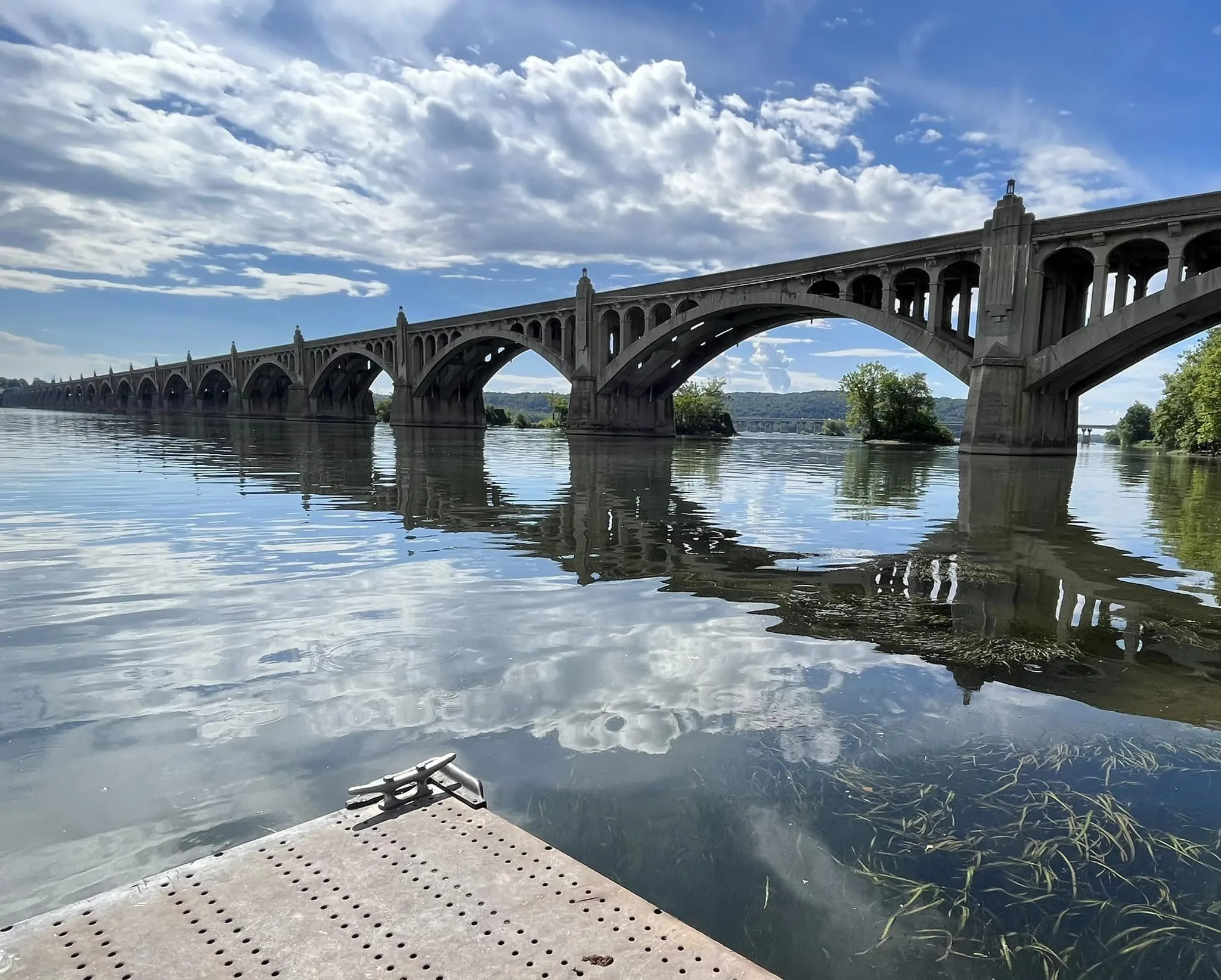Almost unknown except to locals, no longer carrying a major highway, and not located near any big city or major tourist sites, the Columbia-Wrightsville Bridge in Pennsylvania is a hidden gem. susquehanna River Covered Bridge
The bridge crosses the Susquehanna River between York and Lancaster, Pennsylvania, approximately 50 miles west of Philadelphia and 50 miles north of Baltimore.
The current bridge was opened in 1930, and it is the fifth-generation bridge at one of the most important and eventful river crossings in the early United States. susquehanna River Covered Bridge
In 1863, the second bridge at this location was the focus of one of the most consequential events in United States history. To reach Harrisburg in 1863, the Confederate Army needed to cross the Susquehanna River, one of the most expansive rivers in the eastern United States. While the entire Army was moving eastward into Gettysburg, detachments were sent further forward to secure the Columbia-Wrightsville Bridge.
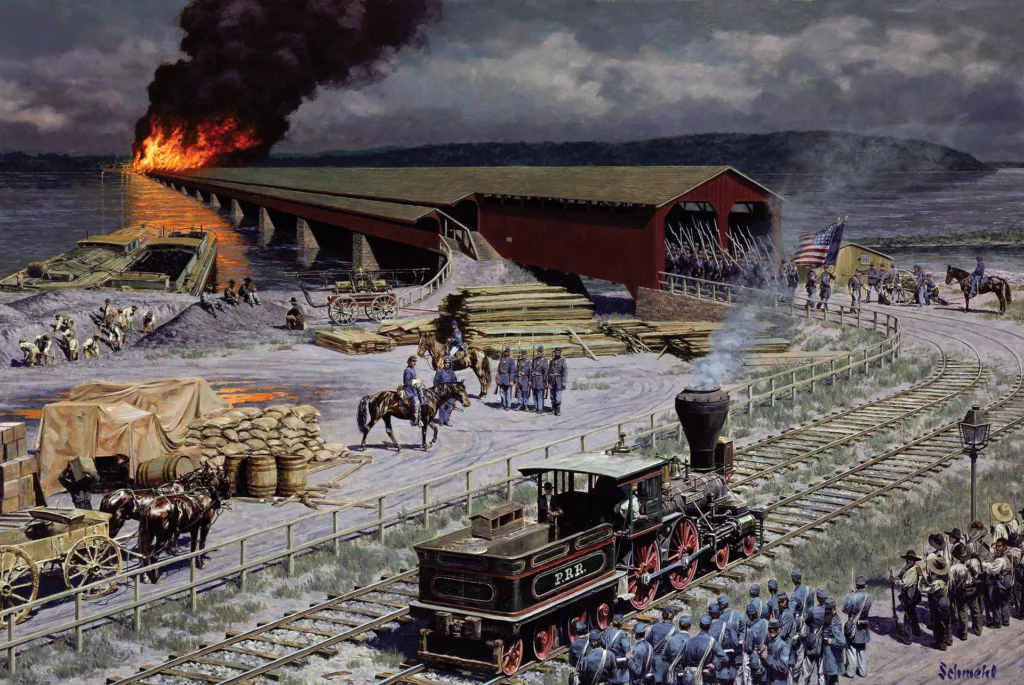
These detachments cut the Northern Central Railway line at Hanover Junction 30 miles east of Gettysburg,
captured the town of York, and then, on June 28, 1863, reached the shore of the Susquehanna an additional 13 miles further east at Wrightsville. They were too late.
The wooden bridge was burned by Union troops,
foiling the Confederate advance and giving the Union’s Army of the Potomac time to reach Gettysburg and begin the battle three days later.
If the Confederate Army had succeeded in capturing the bridge, they likely would have continued to Harrisburg and threatened Philadelphia, possibly resulting in a different outcome of the Civil War.
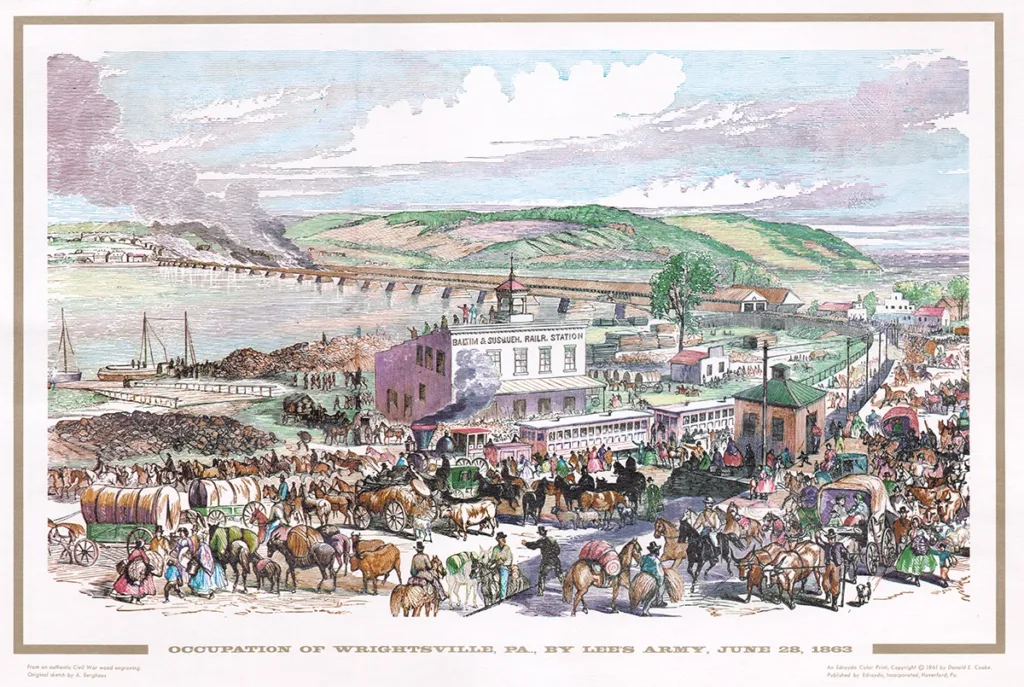
Step back in time to April 1886. Highlighted here in this LancasterHistory photograph is the entrance to the Pennsylvania Railroad Bridge over the Susquehanna River at Wrightsville,
York County, through the lens of Howard H. Betz. Back then, this mile-long marvel was the longest-covered bridge in the world, a testament to the ingenuity and ambition of the era. It is a historical gem that reminds us of the incredible feats of engineering of the past.
On September 29/1896/ the Cedar Keys Hurricane ripped through Central Pennsylvania with gale-force winds and torrential rain. It left a wake of destruction, levelling barns, trees, and the 1869 Columbia-Wrightsville Bridge. susquehanna River Covered Bridge
Metrotrails Then and Now Series: Wrightsville, Pennsylvania,
historic 1896 image of the destroyed, covered bridge over the Susquehanna River, compared to the same scene on our 2022 hike.
The third bridge between Wrightsville and Columbia was destroyed due to the Cedar Keys Hurricane.
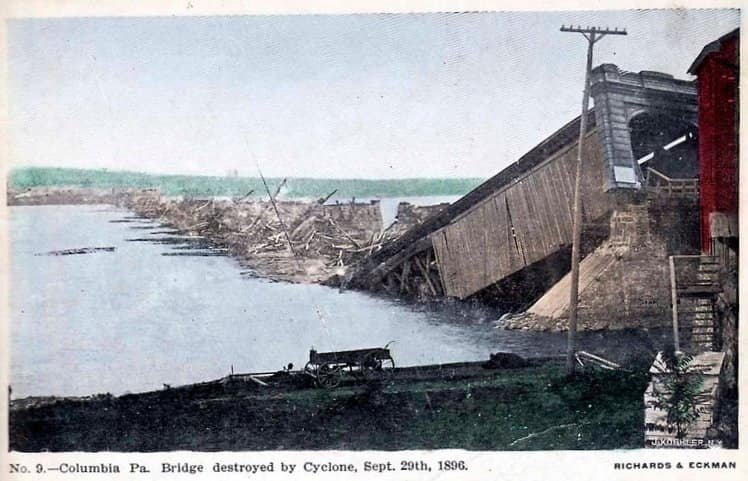
The first bridge to cross here was a covered bridge completed in 1817, just downstream from the current bridge. The 5,690 ft bridge amazingly had 54 piers. This was destroyed by high water and ice in 1832.
The second bridge was completed in 1834, just upstream from the current one, and utilized only 27 piers.
It was fitted with two towpaths for mule traffic towing canal boats. The Susquehanna and Tidewater Canal terminated in Wrightsville. Ships could be towed across the river by way of the bridge and then locked into the Pennsylvania Canal on the other side to continue.
After 1856, it also became a railroad bridge. Because of the fear of fire, horses towed trains across the bridge rather than locomotives.
Union forces burned the second bridge during the Civil War to thwart Confederate advances,
and the bridge company was never reimbursed for damages. All interests in the bridge were sold to the Pennsylvania Railroad in 1864.
This was the third bridge built by the Pennsylvania Railroad in 1868. It carried the railroad, carriageway, and walkways until 1896.
The 4th bridge to cross the river at this site, also on the same piers, was completed in 1897. It was of steel construction and carried railroads, carriages, walkways, and automobiles.
A second level was also planned, but it was never completed. The Susquehanna and Tidewater Canal was taken over by the Reading Railroad in the 1870s and abandoned in 1894
, so towpath use was no longer needed.
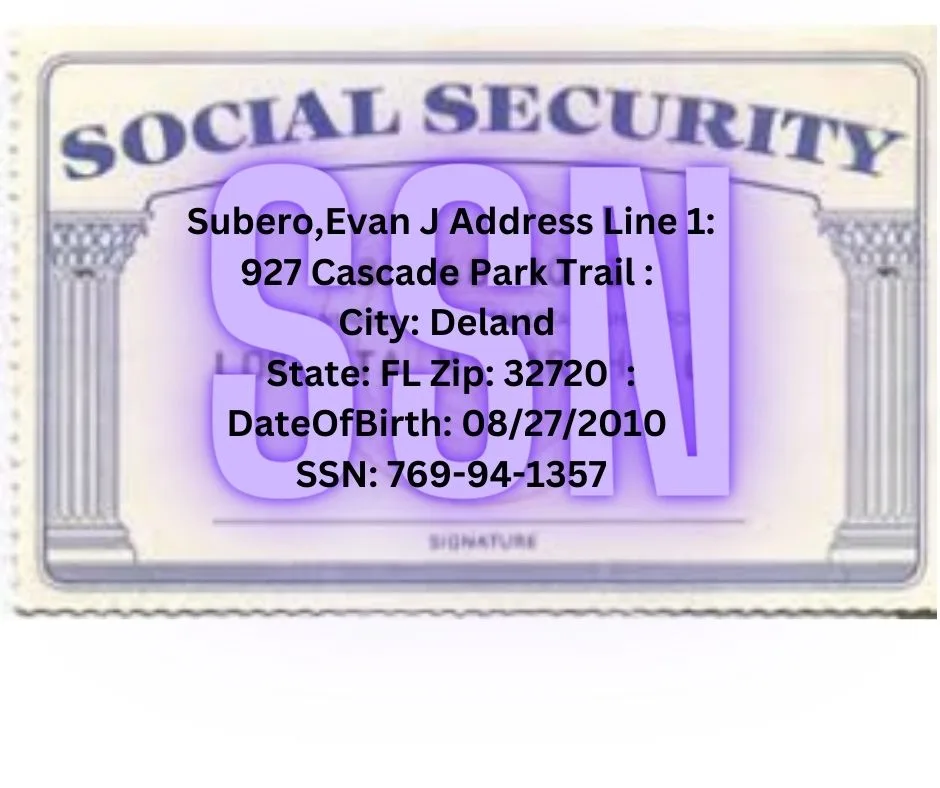
The opening of the Lincoln Highway in 1925 caused significant traffic issues,
so the current bridge (Veterans Memorial Bridge after 1980) was opened in 1930.
It, too, has great pedestrian walkways.
The steel bridge carried passenger trains until 1954 and freight until 1958. The bridge was dismantled in 1963 and 1964. susquehanna River Covered Bridge
The current bridge carried US Route 30 until the Wright’s Ferry Bridge’s upstream opening in 1972.
The earlier bridge piers can still be seen from the bridge. susquehanna River Covered Bridge

